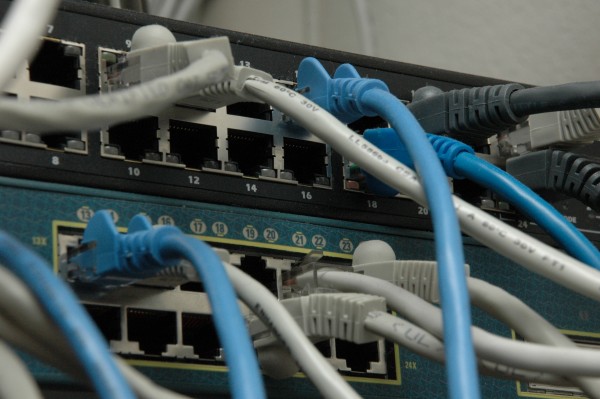Over the years technological advancement has reduced the usage of cables or wires for connectivity. However, it has not been entirely eliminated. Even today, in the 21st century, network cables are being used to transfer information from one device to another. In spite of the wireless network facility that is available nowadays, network cables are still convenient and suitable to use.
What is a Network Cable?
Network cables attach two or more devices and link them to move across files and documents. These devices are commonly personal computers, Internet modems and routers etc. Cables are used to export or import media within which data flows between devices.

Types Of Network Cables
There is a diverse range of network cables available. Each network cable has a specific usage that depends on both, the type of technology and the structure of the system being used. Following are a few examples of the kinds of cables being used:
- Twisted Pair Cables
These were introduced in the 1990s. They emerged as the pioneer system used for Ethernet. It first came with 10Mbps but was eventually introduced with improved speed levels like 100 Mbps going up to 110Gbps. Ethernet twisted pair cables consist of up to eight wires that are looped together in duos. These wires are insulated to ensure complete mitigation of electromagnetic interruption. Local Area Networks (LAN) uses the twisted pair cables. The wires are twisted as they avoid interference and from other devices as well as adjoining cables.
There are two types of twisted pair cables; (UTP) unshielded twisted pair and (STP) shielded twisted pair. Unshielded twisted pair cables are used frequently because of their low cost.
- Fiber Optic Network Cables
These cables use glass filaments, fibers or light impulses. They are flexible and can be bent in any shape in spite of the fact that they are made of glass. Their usage has proved beneficial in Wide Area Network (WAN). They are used to cover long distances and are installed underground. Fiber Optic wires are useful where there is a lot of communication traffic, for instance in an office building.
Fiber optic cables are of two types:
-
Single mode, these are used for long distance communication networks because of its comparatively higher bandwidth potential.
-
Multimode is most often used by local networks owing to its low cost
Fiber optics can be used with a high bandwidth connection. It has become a preferred choice among many home users because of its speed without any interference.
- USB Cables:
The Universal Serial Bus connects to the exterior computer device. USB cables are made of twisted-pair wiring.
- Serial and Parallel Cables:
Although these have become outdated they can still be used for PC-to-PC networking. These are so called null modem cables. One type of Null modem cables is crossover cable. Crossover cables join two similar network devices.
- Patch Cable:
These are for temporary use. Coax cable, twisted pair cables and fiber optic cables are all categories of patch cables. There is no major difference in their physical characteristics; they are only shorter in length.
Fiona Scott talks about the vast variety available in network cables. She has a lot of experience in the ways in which a network cable can be used. Her expertise is the basis why she prefers sites like user2.net.

